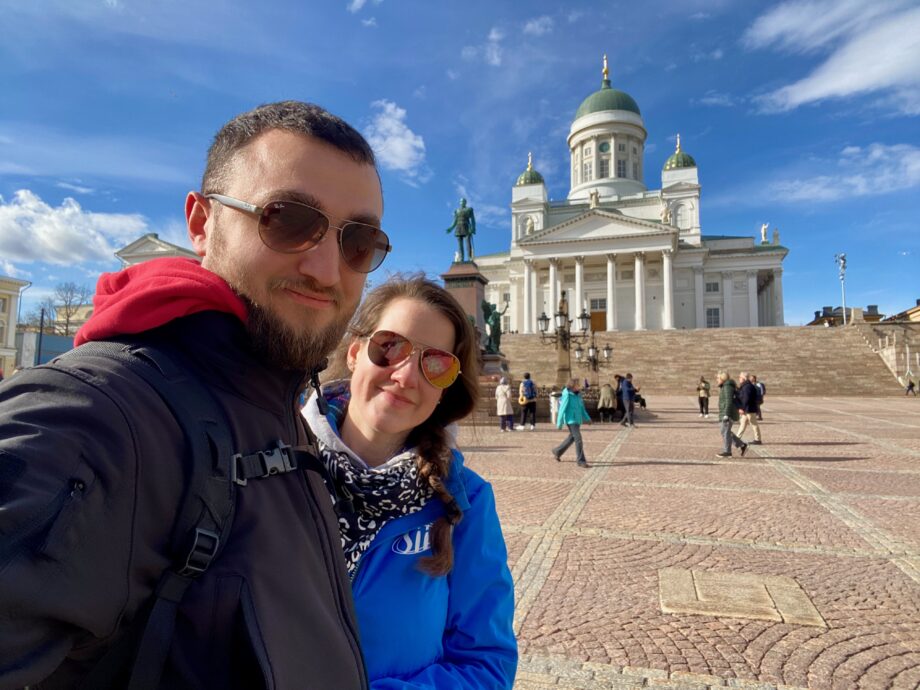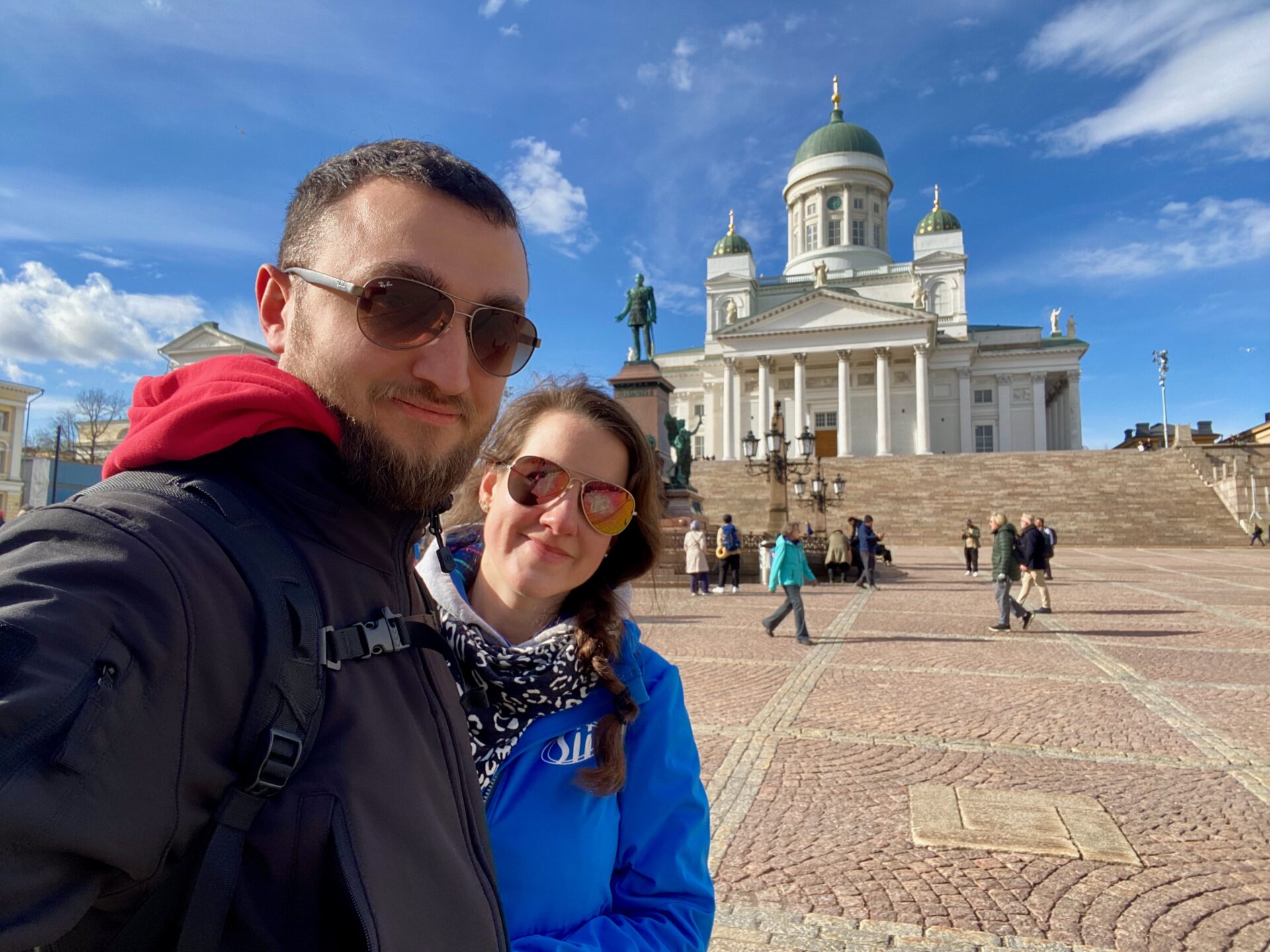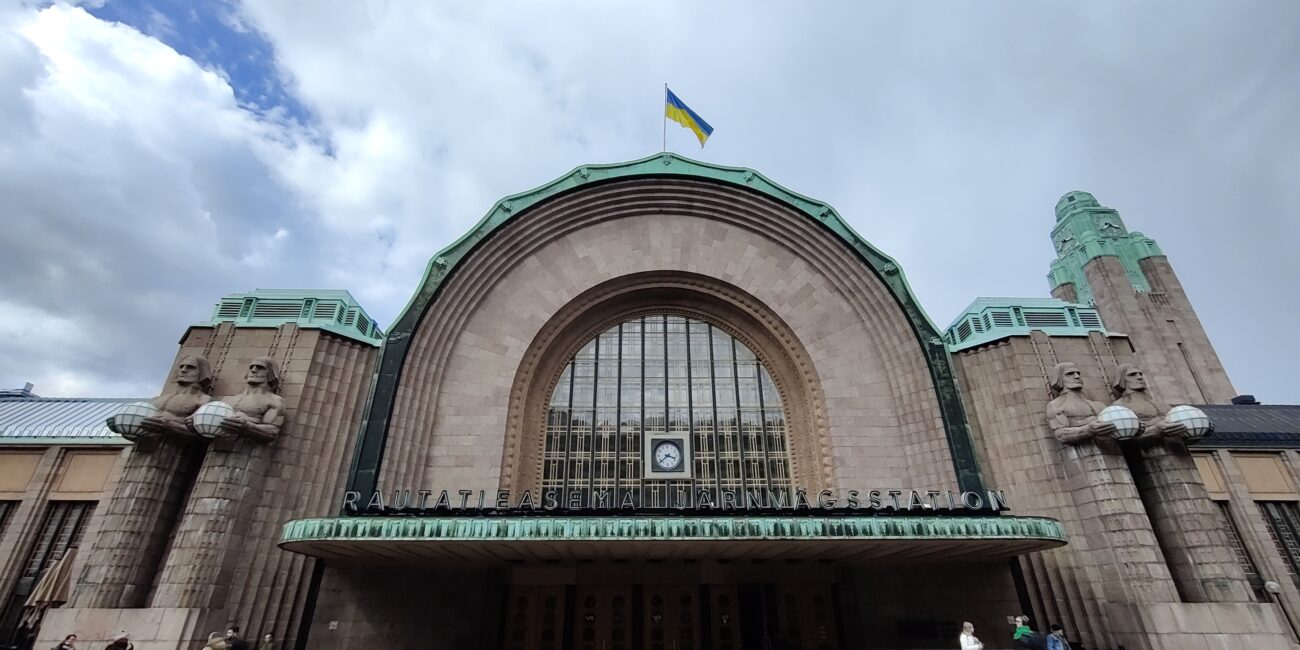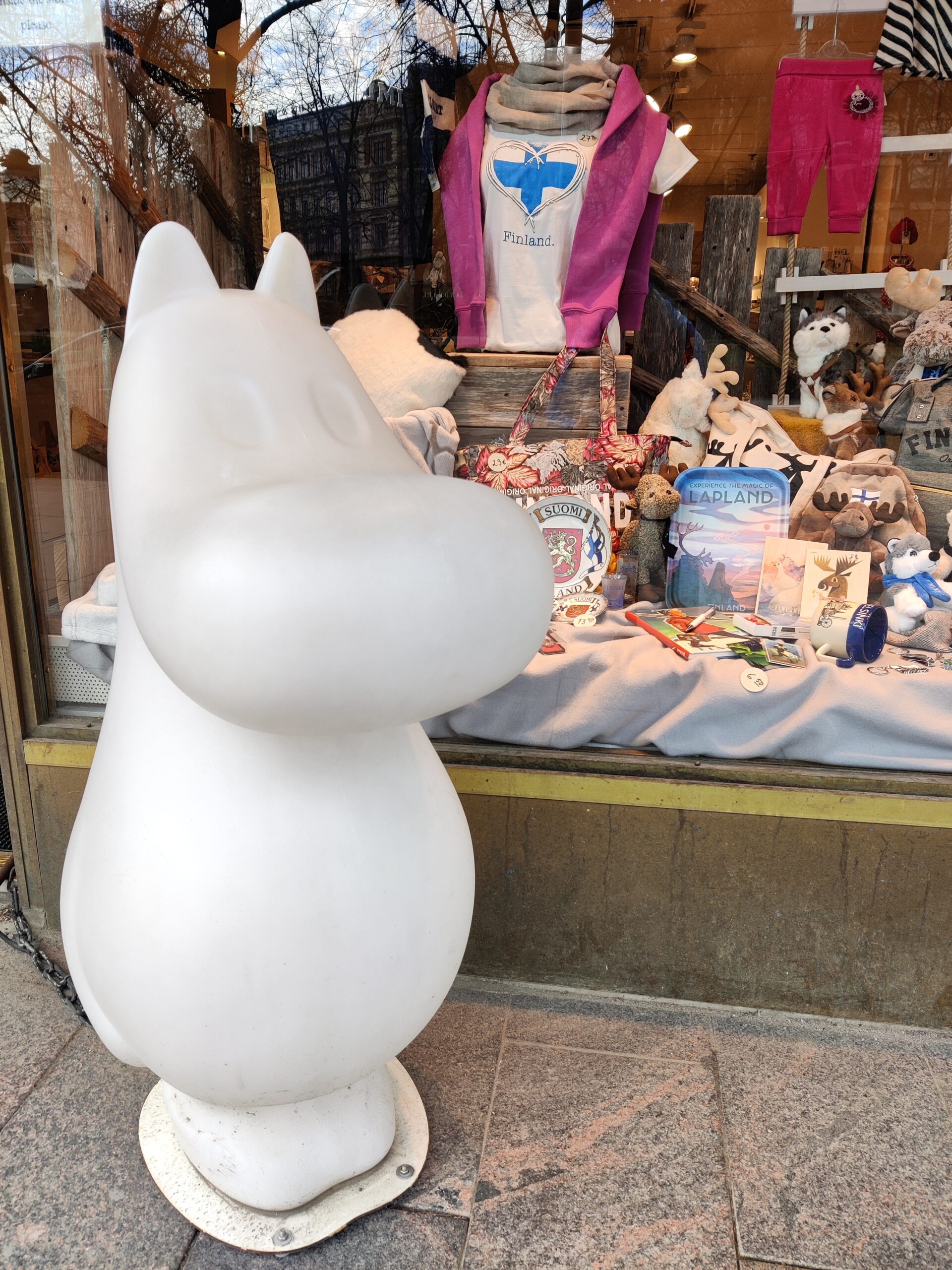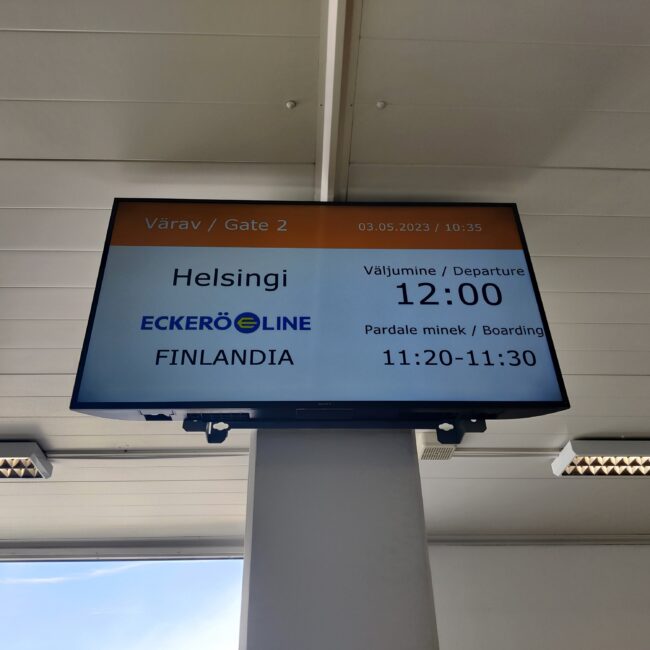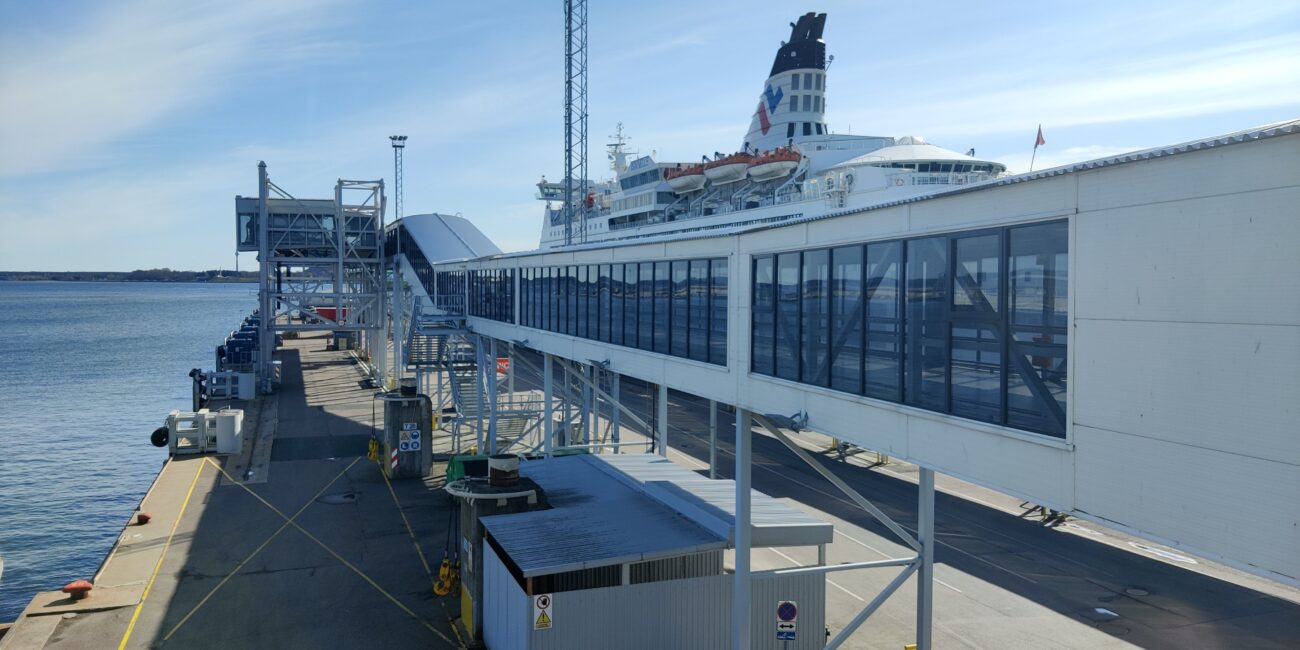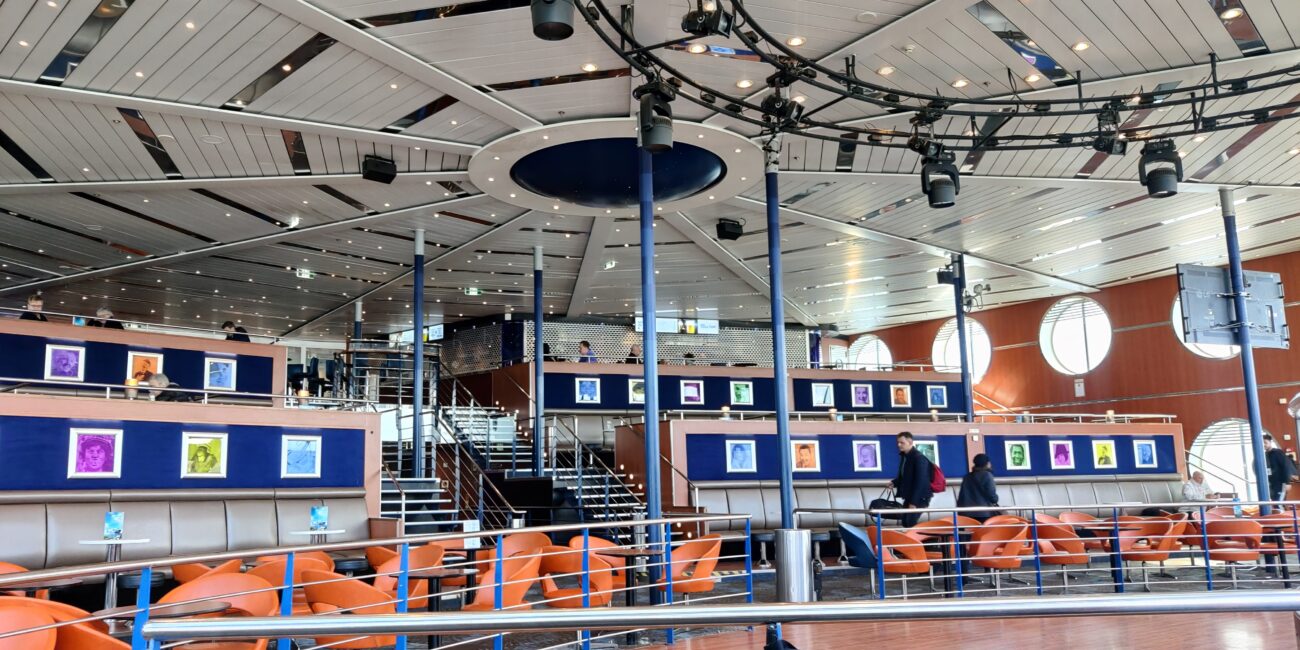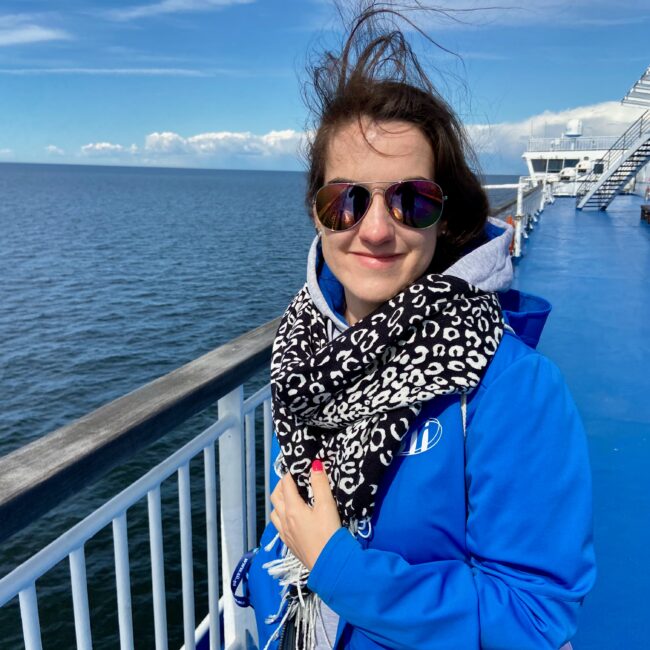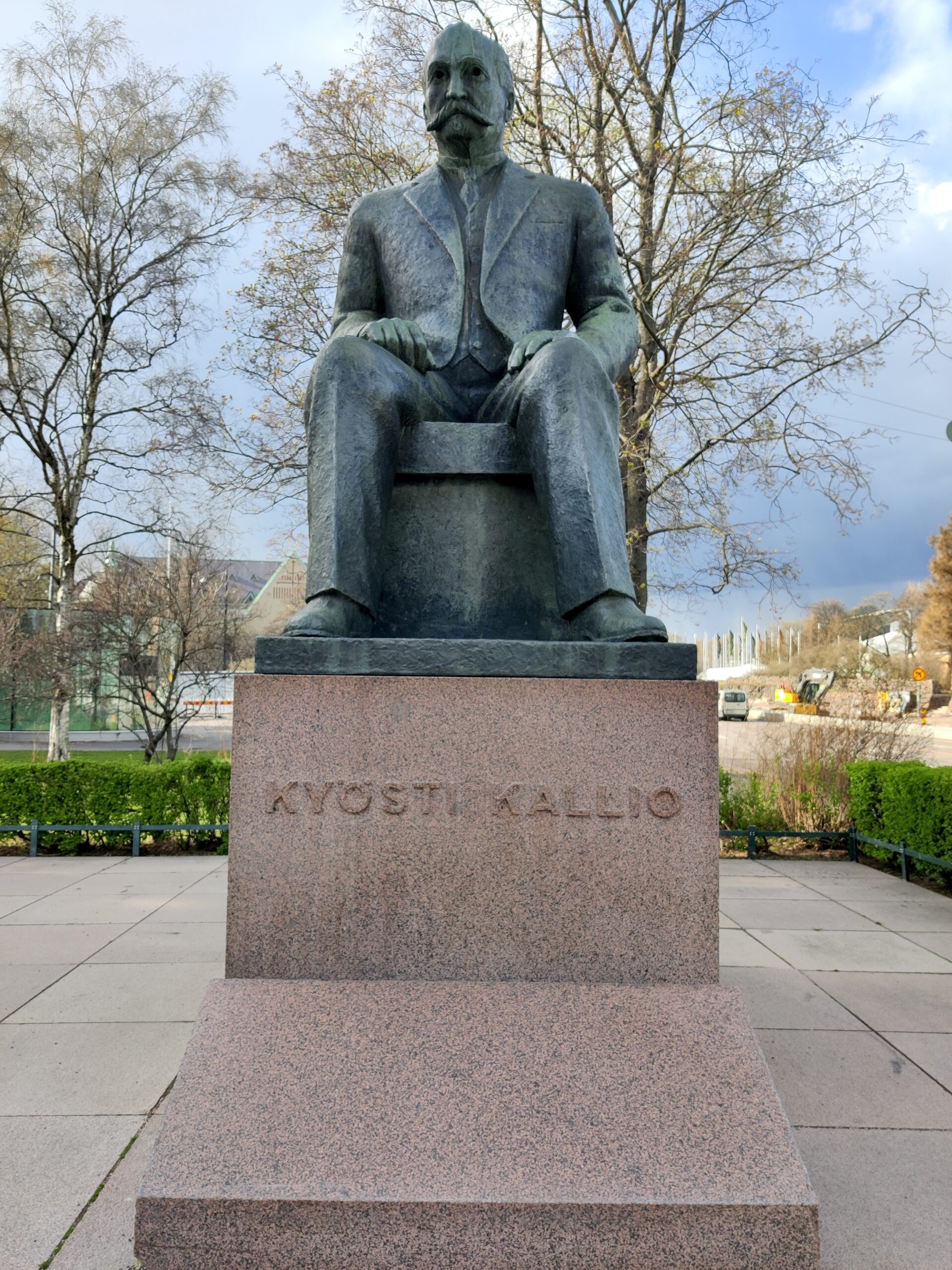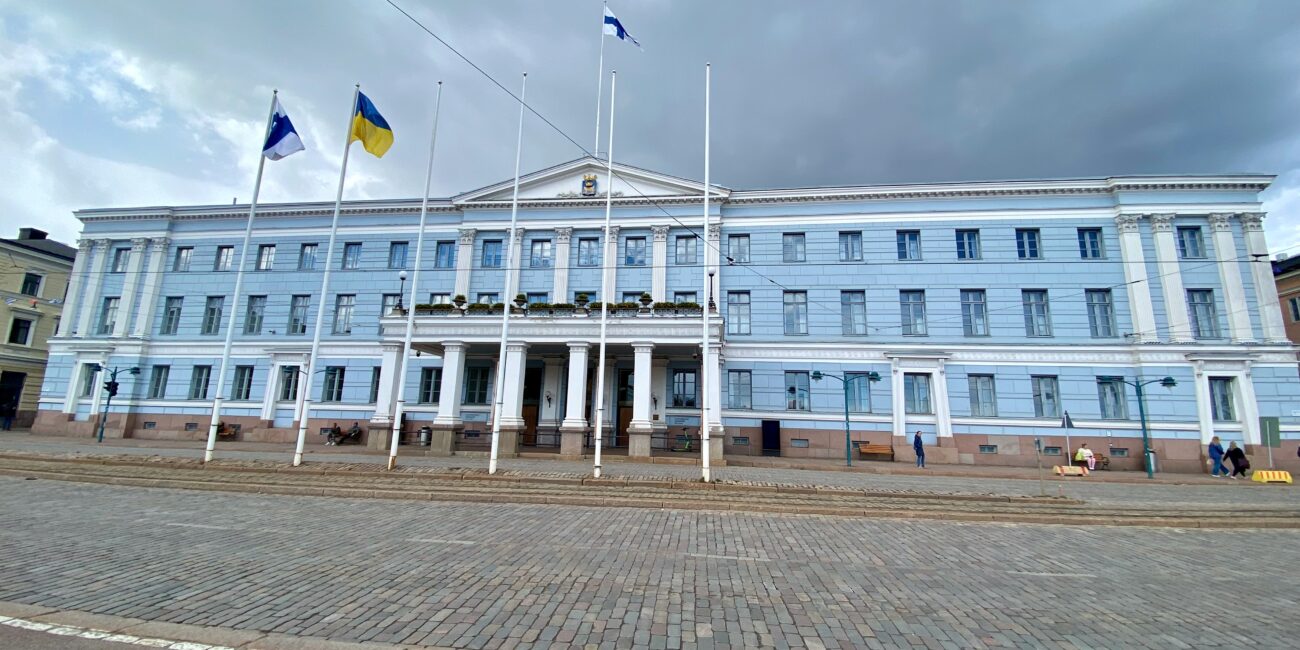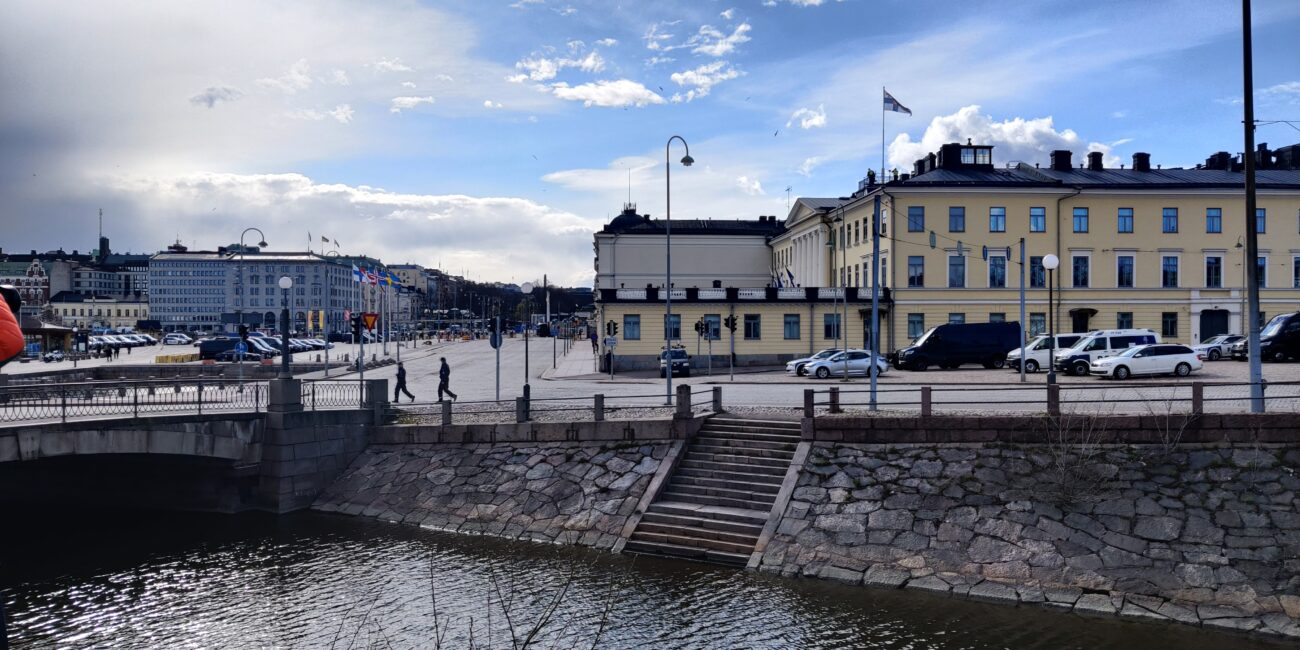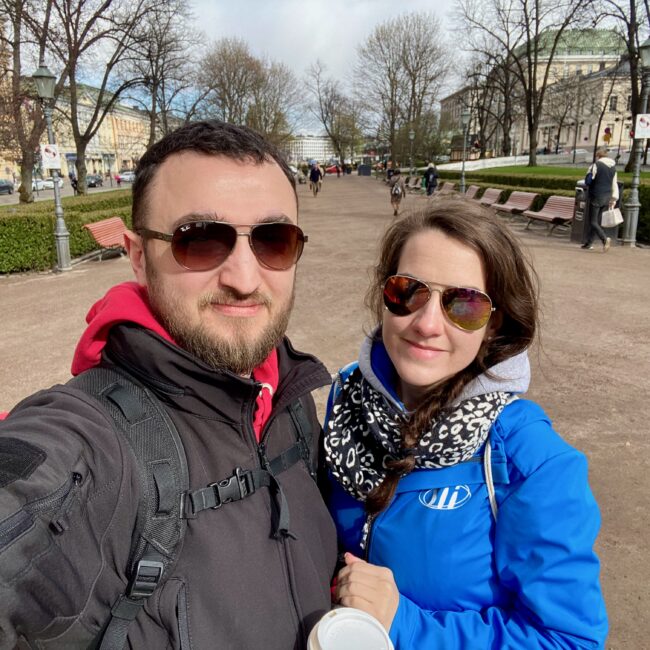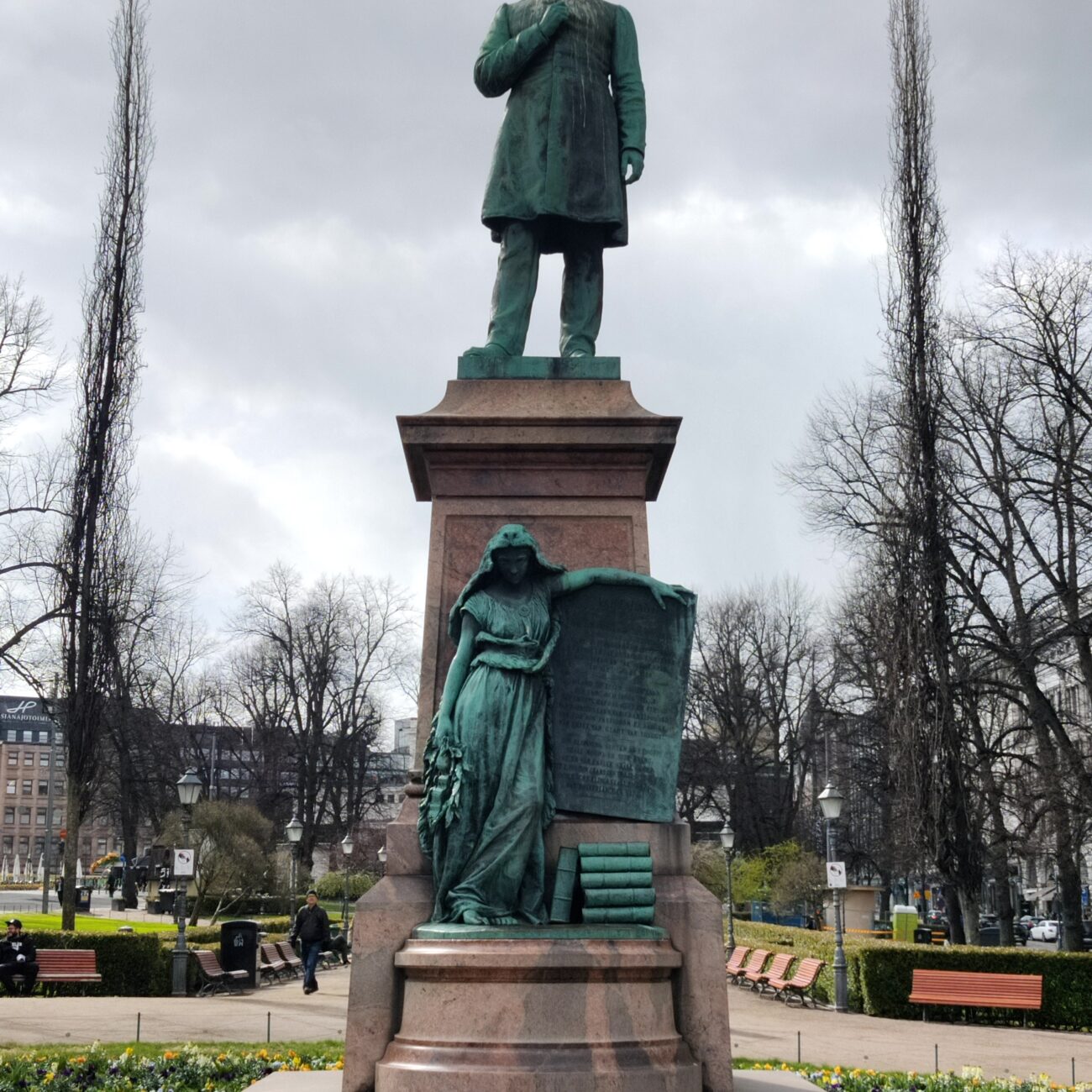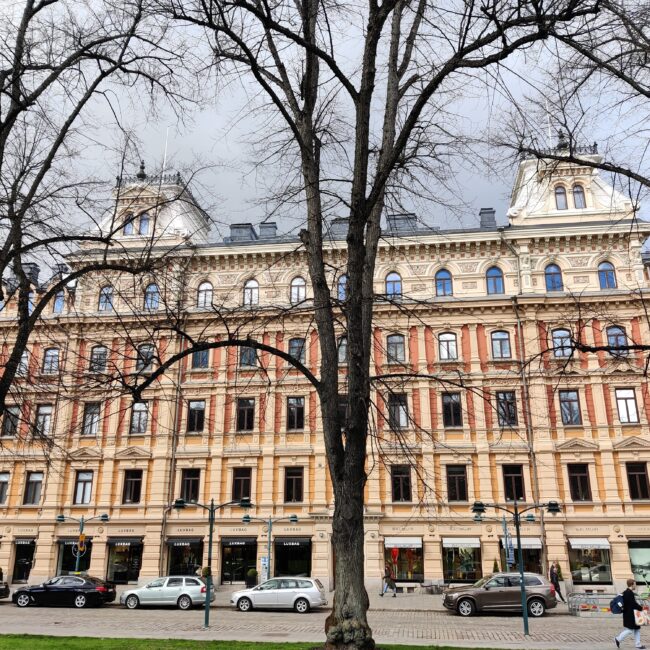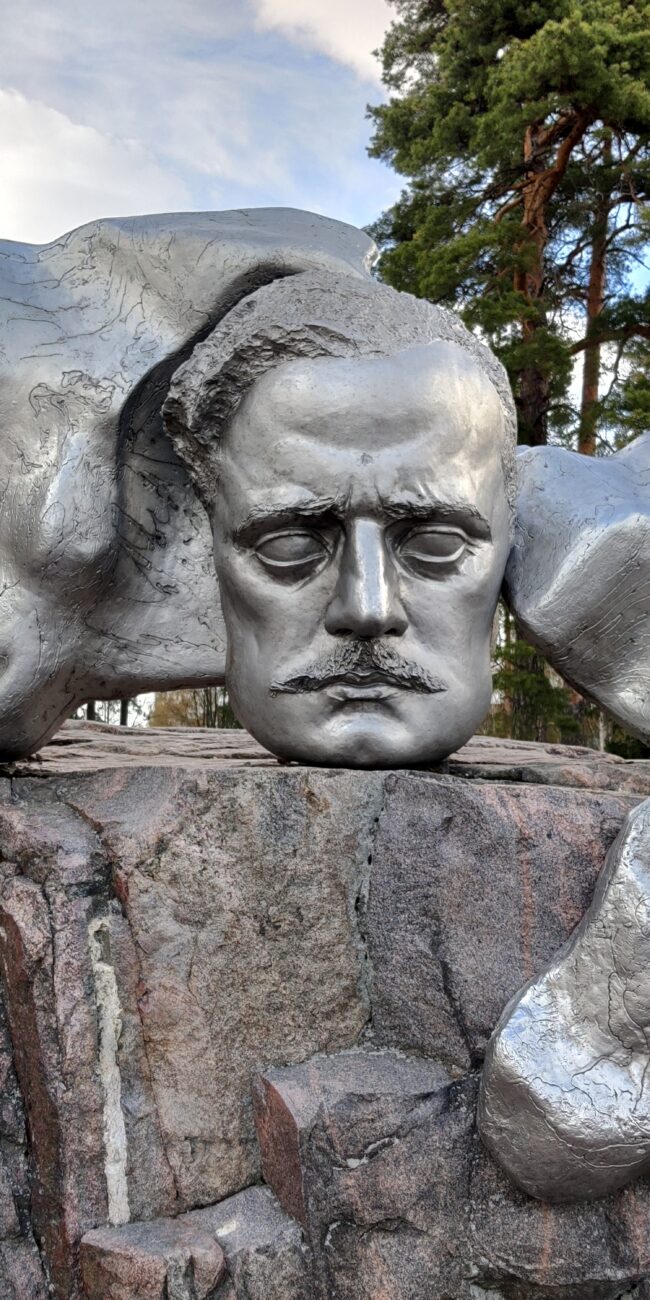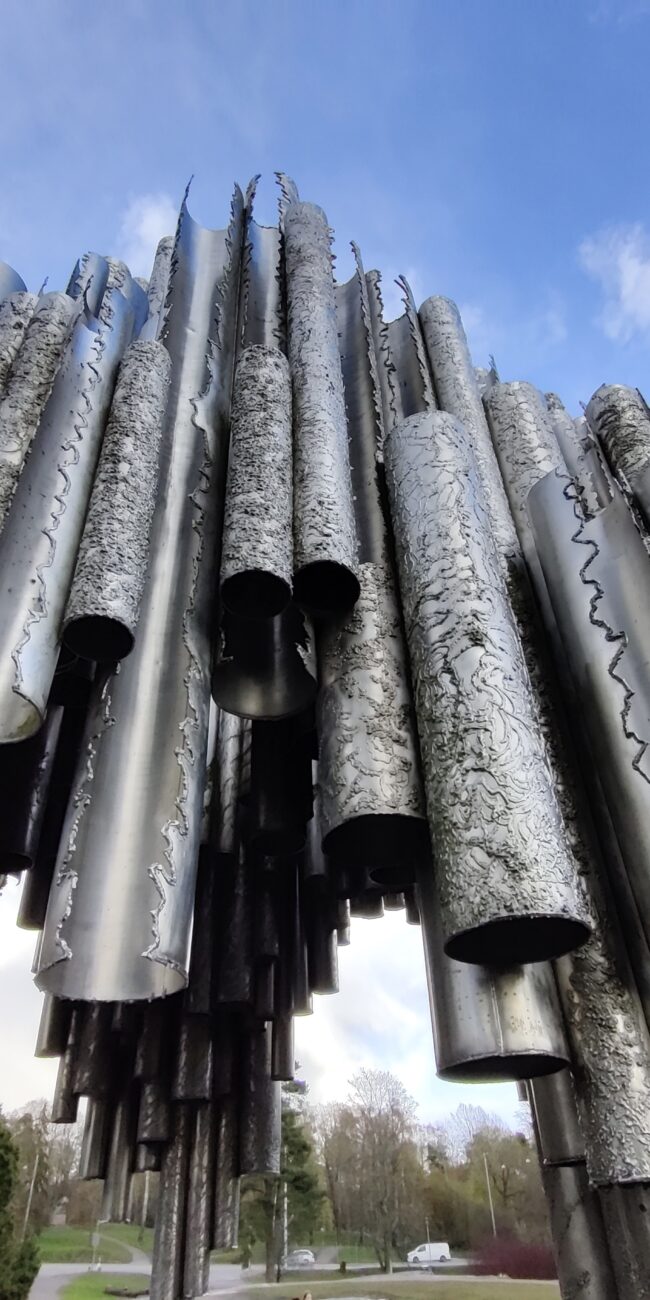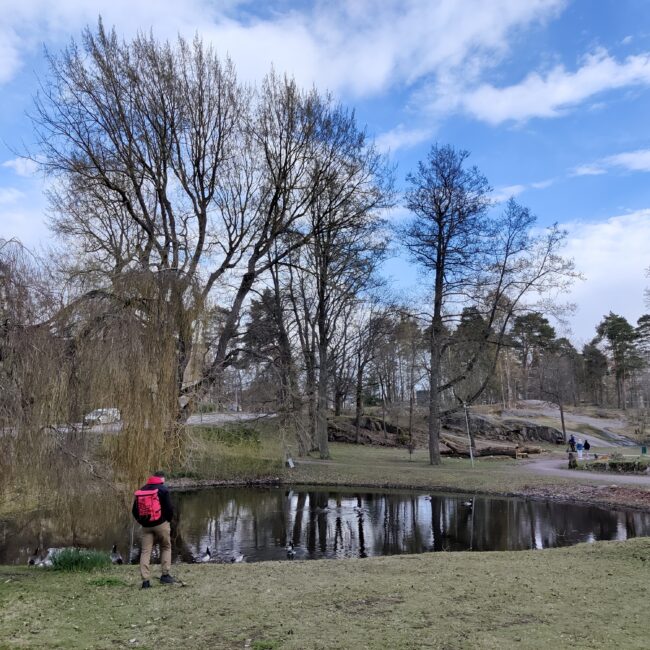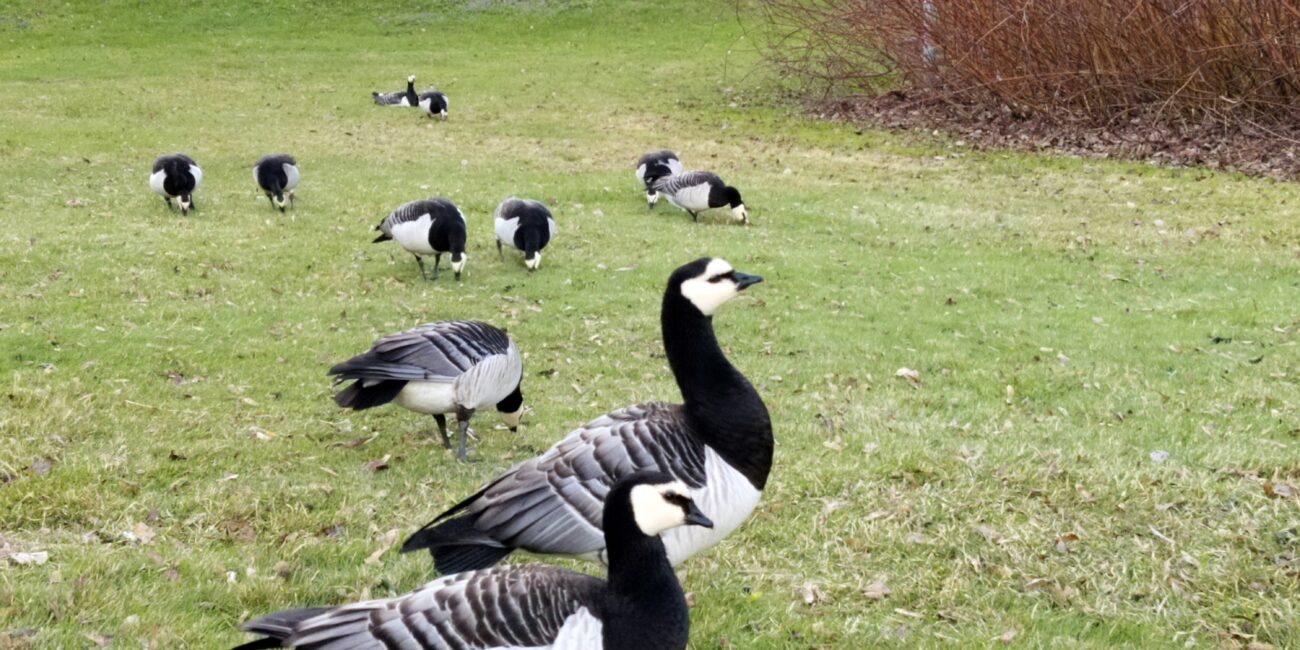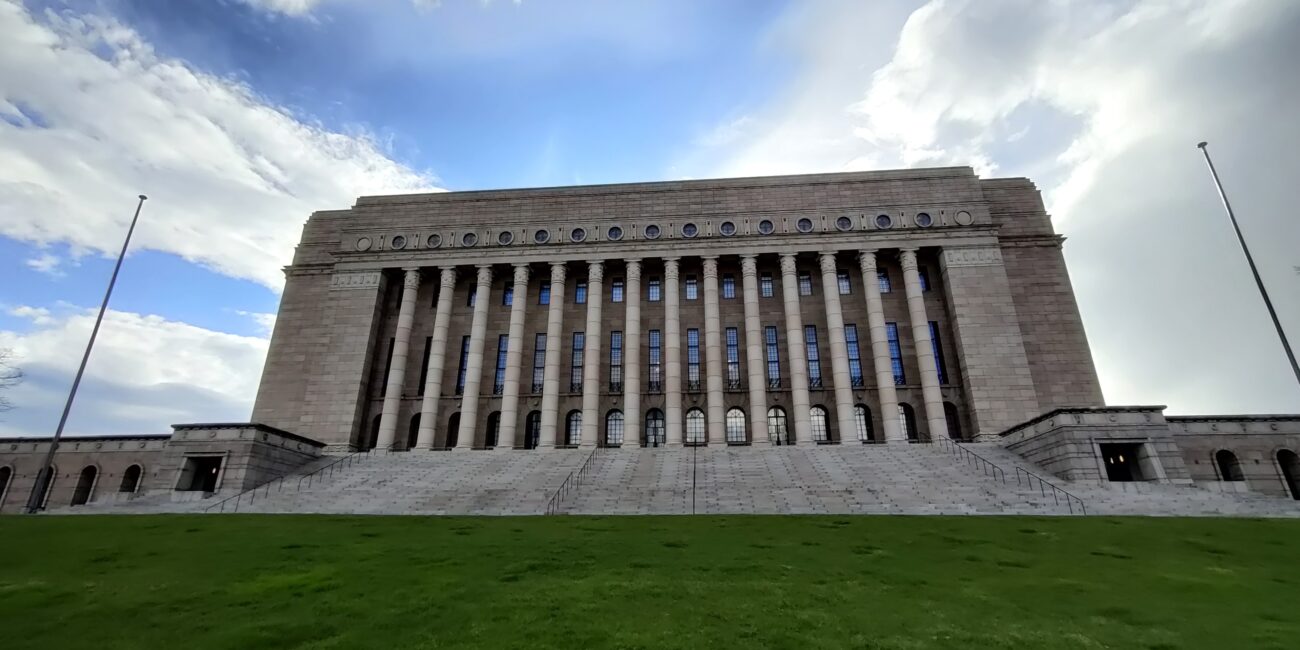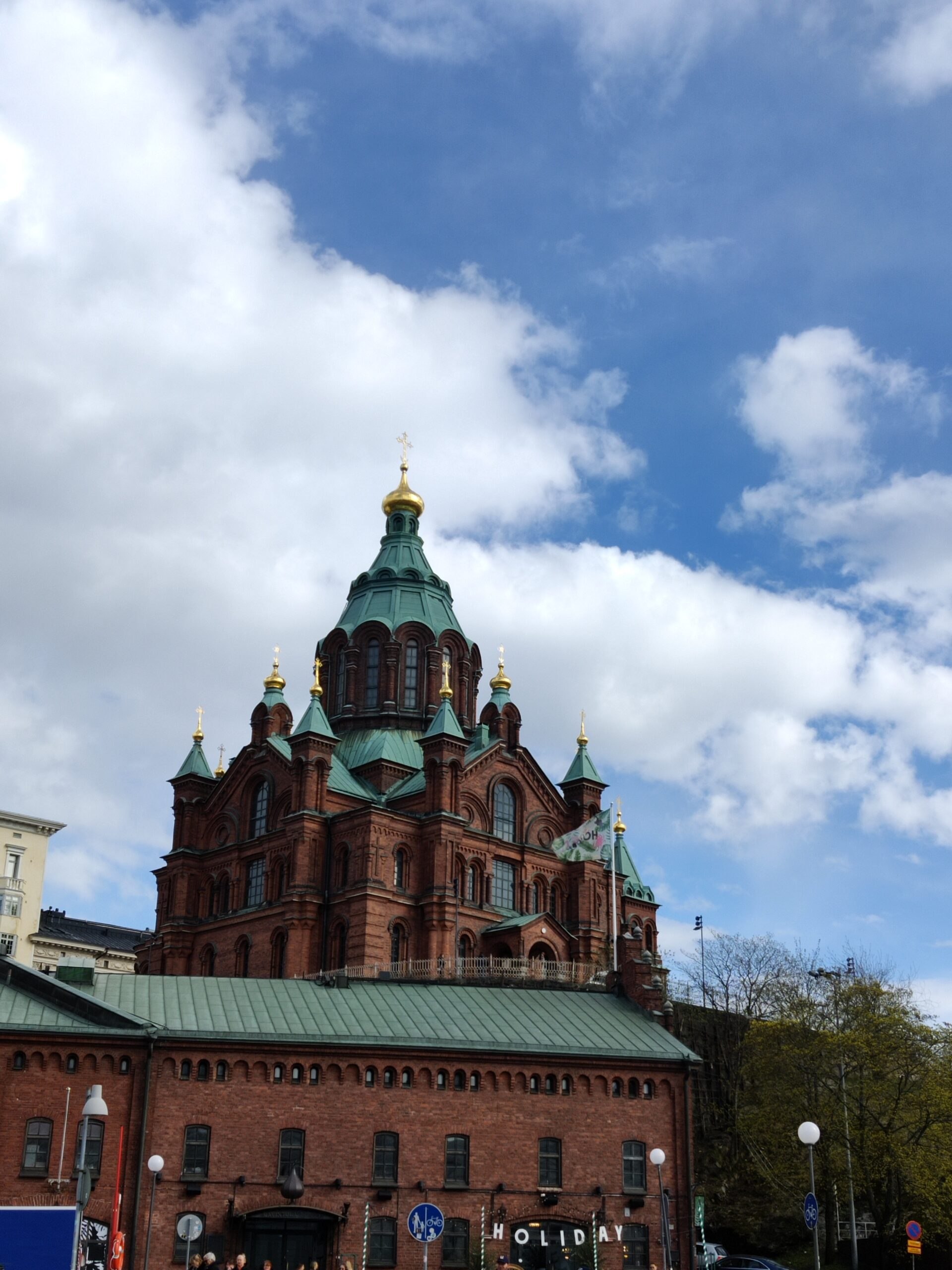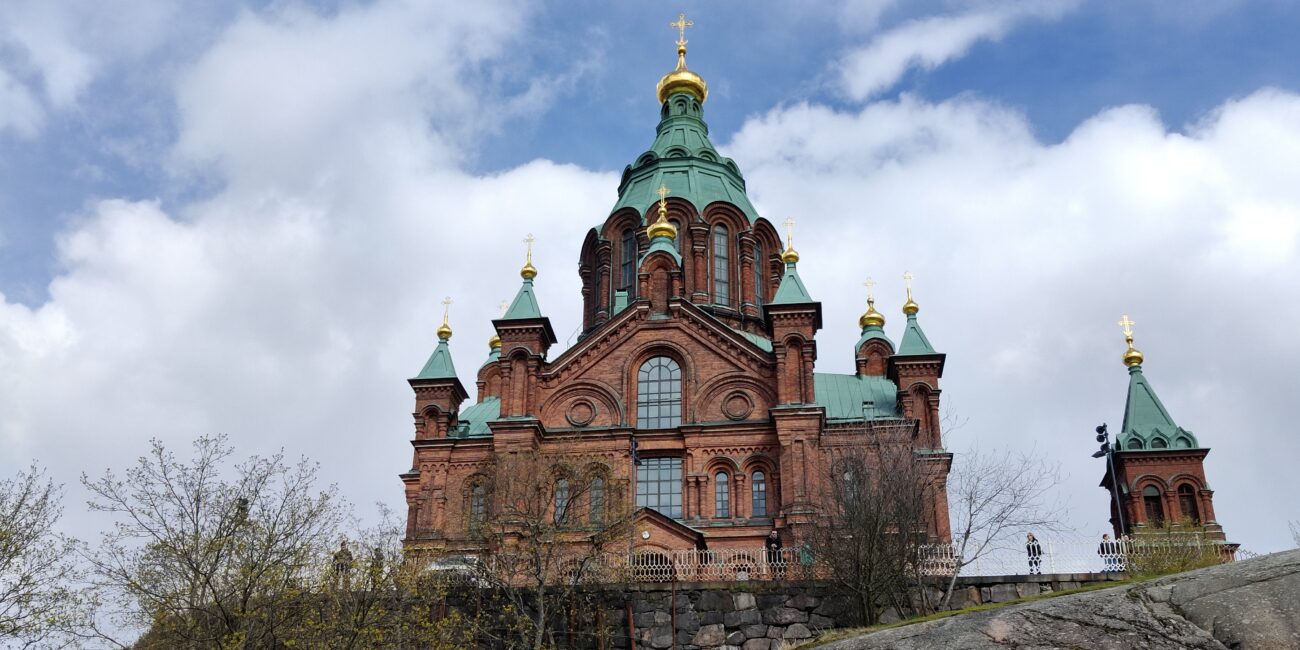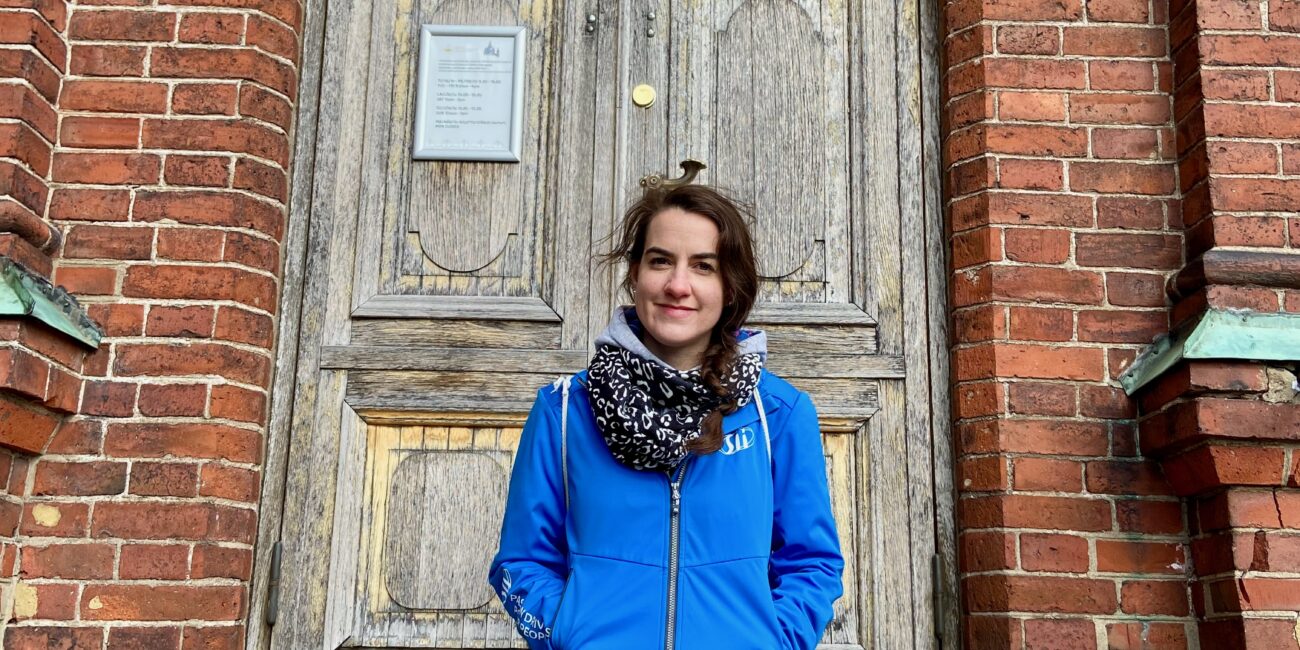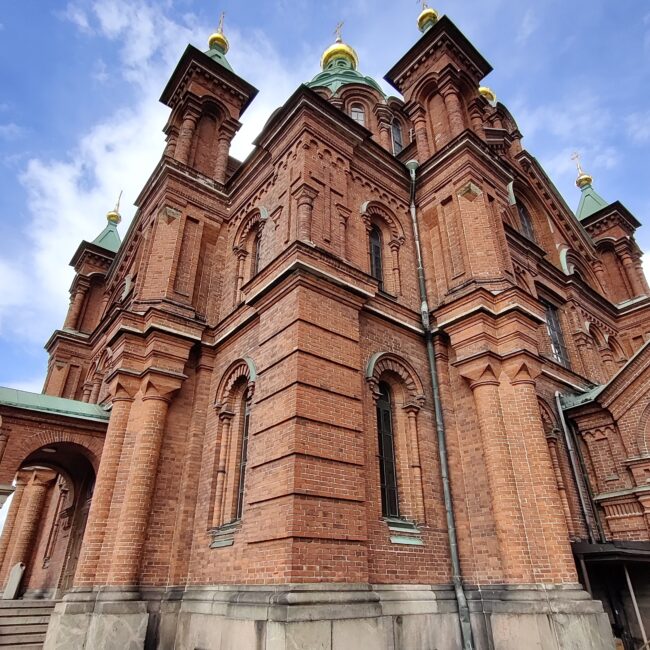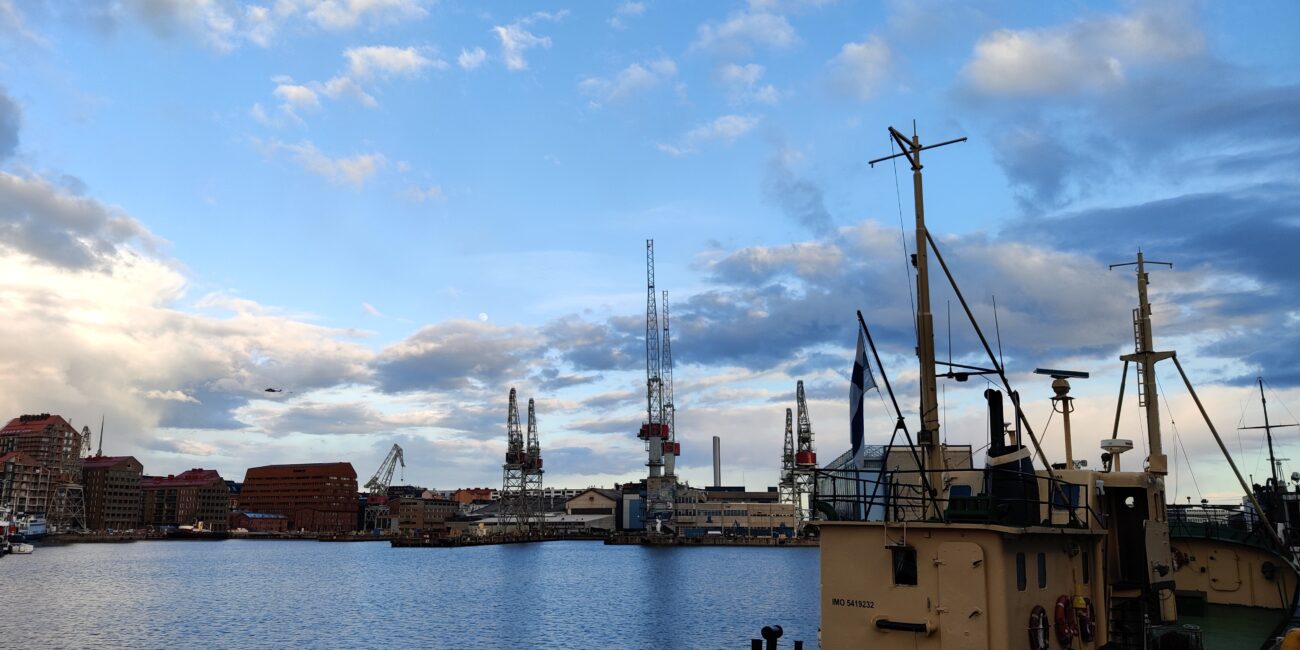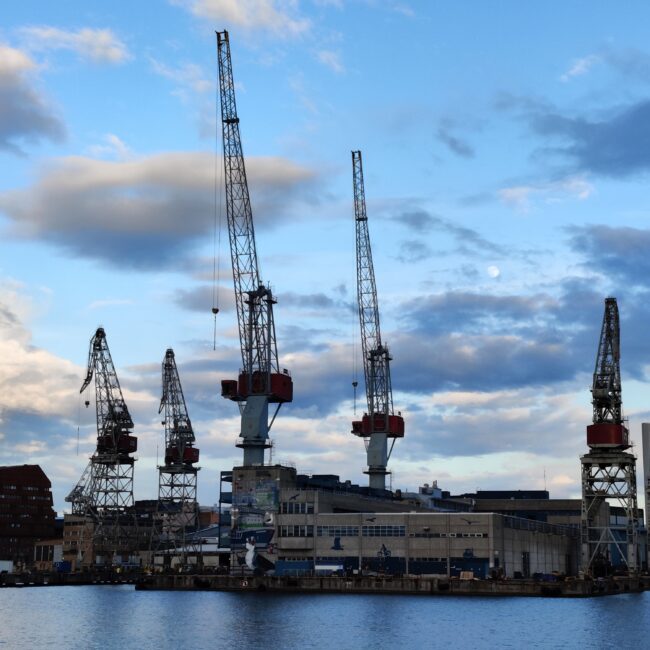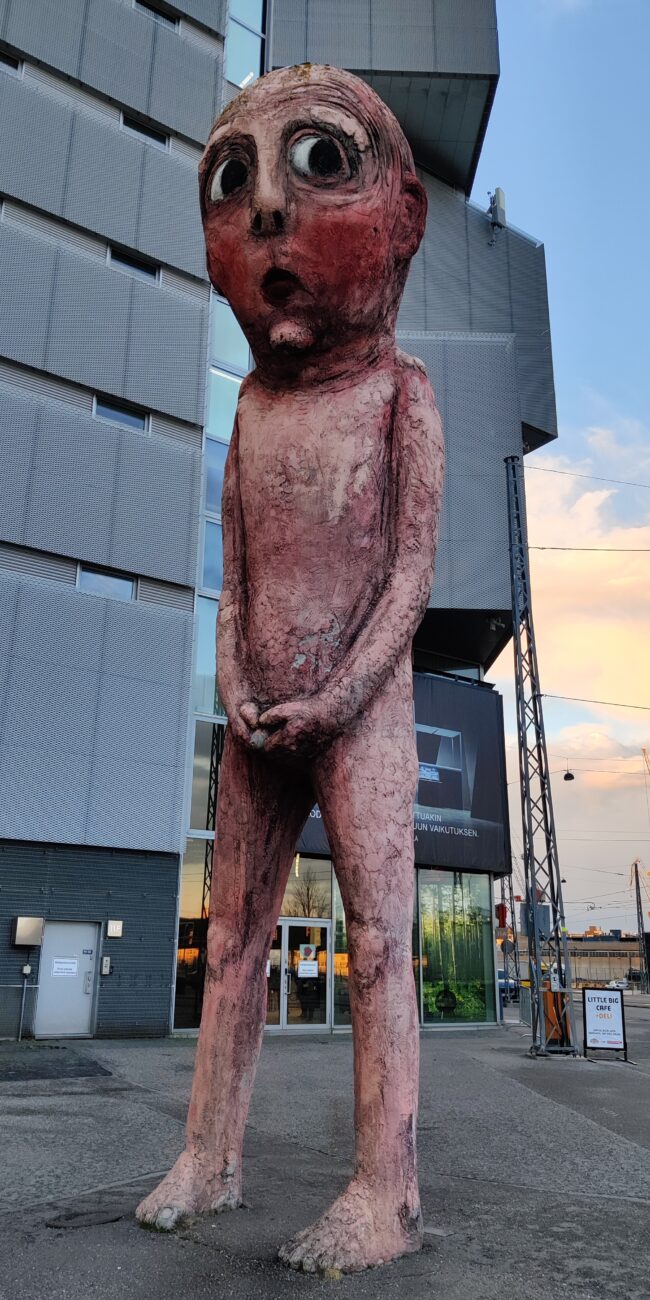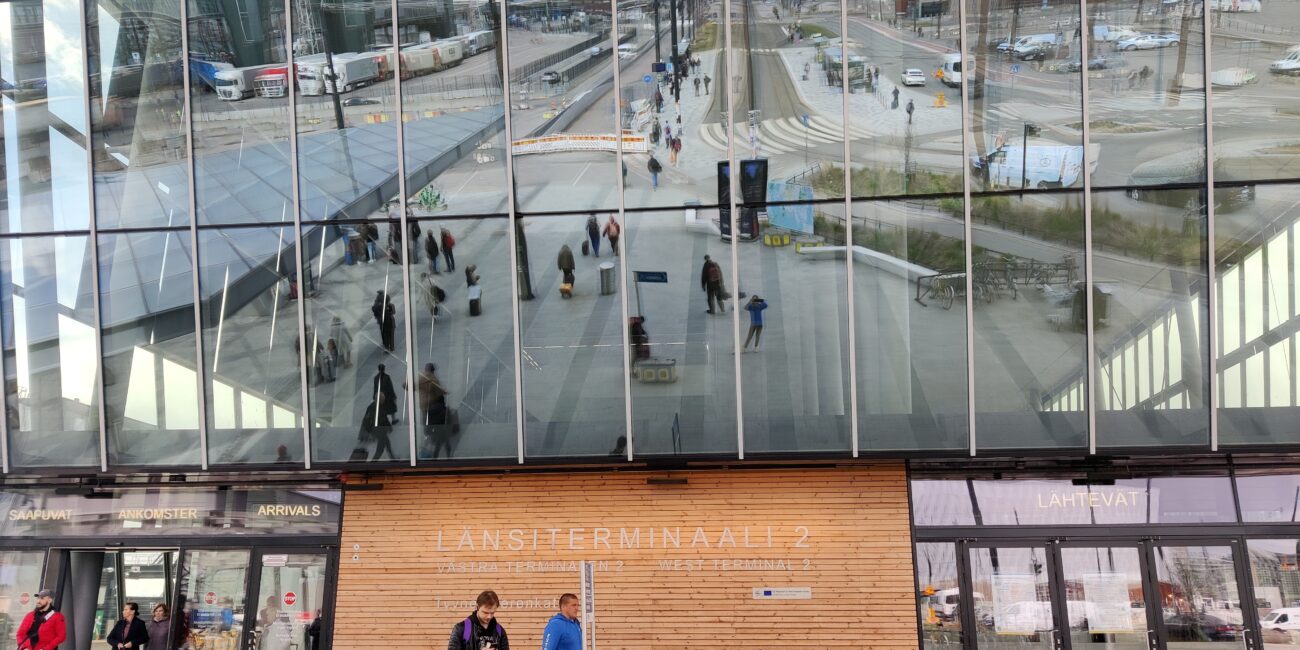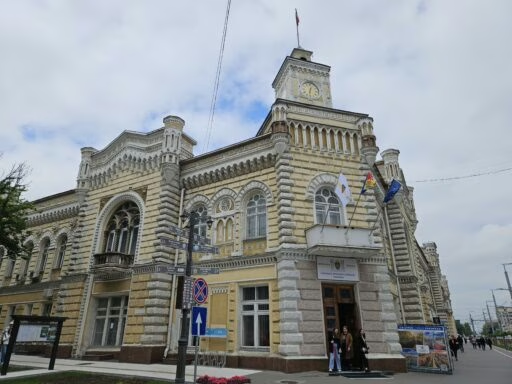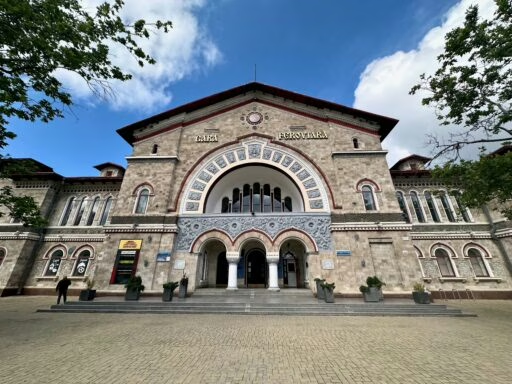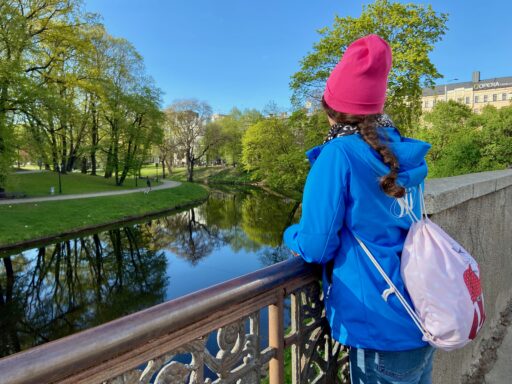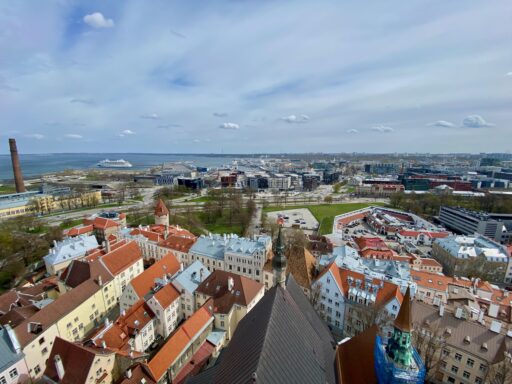This post is also available in:
Polski
Hello! 👋
Our May getaway in Estonia was supposed to be filled with sunshine and long walks, but the weather had other plans for us. Clouds and rain in Tallinn didn’t manage to ruin our mood, though. After all, traveling isn’t just about perfect weather—it’s about spontaneity too! When we looked at the map and realized how close Helsinki was, the decision practically made itself. Why not take a ferry and spend a day exploring Finland’s capital?
If you’re curious about a one-day trip from Estonia to Helsinki, what to see in such a short time, and whether a ferry is a good option, keep reading! And if you haven’t seen our summary of the May getaway in Estonia yet, click here to explore our earlier adventures. 😊
Where is Helsinki located?
Helsinki, the capital of Finland, is a city full of surprises and fascinating facts that immediately capture your attention. Located on the shores of the Gulf of Finland, it offers not only scenic views but also a unique atmosphere. Interestingly, Helsinki isn’t just about the mainland—the city is surrounded by as many as 315 islands! One of the most notable is Suomenlinna, a massive sea fortress from the Swedish era, which today is a favorite spot for leisurely walks among both locals and tourists.
Strolling through Helsinki, it’s easy to see how deeply design is rooted in the city’s identity. Finnish design, from Marimekko’s elegant textiles to Iittala’s delicate glassware, has become a symbol of the nation. It’s no surprise that Helsinki earned the title of World Design Capital in 2012. But the city isn’t just about style and architecture—it’s also rich in literary connections. Did you know that Tove Jansson, the creator of the beloved Moomins, lived here? While her famous characters hail from the fictional Moominvalley, Tove’s spirit is still very much alive in Helsinki, especially in museums and exhibitions dedicated to her work.
How did we get to Finland?
We set off for Finland on an Eckerö Line ferry, which operates regular routes between Tallinn and Helsinki. Before of that, we left our car parked at the hotel in Tallinn since this was just a one-day trip, and having a vehicle wasn’t necessary in this case.
We planned our ferry ride for 12:00 noon, which turned out to be a perfect choice. It gave us plenty of time to enjoy a relaxed breakfast and prepare for the trip. The ferry, MS Finlandia, left a great impression on us. Its interiors were spacious and comfortable, and we found a cozy spot inside with a clear view of the route ahead. Unfortunately, the weather wasn’t ideal for strolling on the outer deck—strong winds quickly sent us back inside after just a brief moment outdoors. Thankfully, from the comfort of our seats, we could still admire the expansive waters of the Gulf of Finland.
Traveling to Finland as a citizen of the European Union is incredibly simple and hassle-free. There’s no need to worry about additional documents or visas—a valid ID card is all you need.
The journey from Tallinn to Helsinki takes about two hours, which pass surprisingly quickly. The ferry arrives at West Terminal 2 (Länsisatama T2) in Helsinki, located in the Jätkäsaari district. This area is well-connected to the city center, allowing us to start our one-day adventure right away.
Other ways to get to Helsinki
Of course, the ferry from Tallinn to Helsinki is one of the most popular travel options, but if you’re not coming from Estonia, there are plenty of other ways to reach Finland’s capital. Helsinki is well-connected to other parts of Europe and the world, ensuring there’s a convenient option for everyone.
🚗 By car or 🏍️ By motorcycle
Traveling to Helsinki by car or motorcycle is a real treat for fans of independent adventures. The most popular route takes you along the scenic Via Baltica, the European E67 highway. It begins in Warsaw and continues through Lithuania, Latvia, and Estonia.
You can also reach Helsinki by sea from Stockholm. Ferries on this route offer overnight cruises, allowing you to combine travel with a comfortable night’s rest onboard. It’s a popular option among tourists who want to explore both Sweden and Finland as part of a single trip.
Theoretically, it is possible to reach Helsinki by land from Russia, through the Vaalimaa-Torfjanovka border crossing. Just a few years ago, this was a fairly popular option, especially for travelers coming from St. Petersburg, which is about 300 km from Helsinki. However, due to the current geopolitical situation, such a journey is extremely challenging, if not impossible, and involves numerous restrictions and risks.
🚆 By train
Traveling by train from Poland to Helsinki is definitely a logistical challenge that requires considerable time and planning. Due to the lack of direct railway connections, the journey involves multiple stages and transfers.
One possible route is through the Baltic countries, starting with a journey from Poland to Vilnius in Lithuania. From there, you can continue by train to Riga in Latvia and then proceed to Tallinn in Estonia. However, connections between these capitals are limited, and sometimes transfers to buses are necessary, which further extends the travel time.
Finally, from Tallinn, you can take a ferry to Helsinki, completing this long and multi-stage journey.
An alternative route is through Sweden, starting with a train journey from Poland to Germany, such as to Berlin. From Berlin, you continue by train to Stockholm in Sweden, usually with a transfer in Copenhagen, Denmark. Once in Stockholm, the final leg of the journey is an overnight ferry to Helsinki, offering a comfortable night’s stay onboard.
🚌 By bus
Traveling by bus from Poland to Helsinki is possible thanks to direct connections offered by FlixBus. The route from Warsaw to Helsinki covers approximately 1,061 km and takes an average of 19 hours and 15 minutes.
It’s worth noting, however, that traveling by bus over such a long distance can be quite exhausting.
✈️ By Airplane
Flying to Helsinki is by far the fastest and most convenient way to reach Finland’s capital. There are many direct flights available from Poland, especially from major cities like Warsaw, Kraków, and Gdańsk. Airlines such as Finnair, LOT, as well as budget carriers like Wizz Air and Ryanair, offer options to suit both your budget and comfort preferences.
A flight from Warsaw to Helsinki takes approximately 1.5 hours, making it an ideal option for those looking to save time. Helsinki-Vantaa Airport is located about 20 km from the city center, and upon arrival, you can easily reach downtown via commuter train, bus, or taxi.
What can we explore here?
In Helsinki, even with just a few hours to spare, you can visit several key and iconic places that allow you to experience the city’s unique atmosphere.
During our short visit, we focused on places that best capture the essence of Helsinki. It’s worth noting that the city is compact, and many of its attractions are within walking distance of each other.
Helsinki Cathedral
One of the first places we visited was the Helsinki Cathedral – a true symbol of the city and one of the most recognizable landmarks in Finland. Located at Senate Square, this impressive structure catches the eye with its neoclassical architecture and white facades.
The cathedral, designed by Carl Ludwig Engel, was completed in the mid-19th century and was originally known as St. Nicholas’ Church. Its central dome is visible from many points in the city, making it an excellent landmark. The stairs leading up to the square in front of the cathedral are a popular spot for both locals and tourists to sit, relax, and admire the surrounding architecture.
👉 For more information, visit the official website.
Helsinki City Hall
During our stroll through Helsinki, we couldn’t miss the City Hall, located near the lively Kauppatori market square. This elegant building, with its light facade and classical columns, catches the eye with its calm charm and simplicity, which perfectly reflects the Finnish style.
The area around the City Hall invites further exploration – nearby is the harbor, where boats and ferries dock, and a walk along the shore offers beautiful views. This spot naturally blends with the city’s rhythm, combining a peaceful atmosphere with the everyday life of Helsinki.
Presidential Palace
During our visit to Helsinki, we had planned to see the Presidential Palace, one of the most important buildings in the city. Unfortunately, we couldn’t get any closer due to the visit of the President of Ukraine. As a result, the square in front of the palace was practically closed off, and additional security measures were put in place around the area.
Nevertheless, we managed to catch a glimpse of this impressive building from a distance. The palace, which serves as the official residence of the President of Finland, is an elegant neoclassical structure that perfectly complements the character of Helsinki with its simplicity. Surrounded by the harbor and neighboring landmarks, it stands as an important point on the city’s map.
👉 For more information, visit the official website.
Esplanadi
A walk along Esplanadi is like a breath of fresh air in the heart of Helsinki. This elegant boulevard, surrounded by greenery, is one of the favorite spots for both locals and tourists. Esplanadi is not just a park, but also the city’s symbolic “living room,” where life unfolds at its own peaceful pace.
As we walked, we passed beautiful buildings, stylish cafes, and boutiques that add a unique charm to the area. Benches lined along the park invite you to sit for a moment and soak in the atmosphere of the city.
At the end of the park, by the harbor, stands the famous monument to the Finnish poet Johan Ludvig Runeberg.
Sibelius monument in Helsinki
Our visit to Helsinki wouldn’t have been complete without seeing the Sibelius Monument, one of the most extraordinary and iconic places in the city. This impressive monument is dedicated to Jean Sibelius, Finland’s most famous composer, whose music became a symbol of the Finnish national spirit.
The monument is located in the peaceful Sibelius Park, a bit farther from the city center, but definitely worth the visit. The sculpture is the work of Finnish artist Eili Hiltunen, who created an abstract piece made up of over 600 steel pipes. The arrangement of the pipes resembles organ pipes, which ties into Sibelius’ musical roots, while also reflecting harmony with nature—something that was an important aspect of his work. The whole piece is truly impressive, especially when the light plays off the metal surface, creating a stunning visual effect.
Next to the abstract sculpture is a classical bust of the composer, providing a more traditional tribute to his likeness.
Parliament
During our walk through Helsinki, we also stopped by the Finnish Parliament building (Eduskuntatalo), which is an impressive symbol of Finnish democracy. The building is located in the city center, close to the main attractions, and immediately catches the eye with its monumental architecture.
The building was designed in a neoclassical style, with a distinctive facade made of pink granite, giving it a raw yet elegant character. The stairs leading to the main entrance and the massive columns emphasize the significance of this place as the heart of Finnish political life. It is here that the most important parliamentary debates take place and decisions are made that shape the future of the country.
👉 For more information, visit the official website.
Uspensky Cathedral
This majestic Orthodox church, located on the Katajanokka hill, is the largest Orthodox temple in Western Europe and a unique feature of the city’s landscape.
From afar, the distinctive architecture of the cathedral catches the eye – the red bricks, golden domes, and intricately decorated details are a true display of the craftsmanship of 19th-century builders. The building was designed by Russian architect Alexei Gornostayev, and its style is rooted in Byzantine-Russian traditions.
Port – West Terminal
During our visit to Helsinki, we had the opportunity to see the West Terminal (Länsisatama), one of the city’s main transport hubs. Located in the modern Jätkäsaari district, the terminal primarily serves ferries traveling between Helsinki and Tallinn, as well as other Baltic Sea cities.
The West Terminal is a great example of functional, modern architecture. Its bright and spacious interiors ensure comfort for travelers, and everything is well-organized—from check-in and waiting areas to easy access to the ferries. From the terminal windows, there is a beautiful view of the harbor and the moored ships.
The area around the terminal is also impressive. The Jätkäsaari district is an example of modern revitalization, where former port areas have been transformed into a welcoming urban space with apartments, restaurants, and walking areas. Strolling along the waterfront, you can truly feel how deeply Helsinki is connected to the sea and maritime transport.
Summary and return to Tallinn
At the end of the day, it was time to return to Tallinn. The ferry left in the evening, giving us a chance for a leisurely walk around the port to say goodbye to Helsinki. After a full day of sightseeing, we were a bit tired. We had covered quite a few kilometers on foot. Still, as we boarded the ferry, we felt content. The weather in Helsinki had been much kinder than what we left behind in Tallinn.
We’re already eager to return to Helsinki to explore more. This time, perhaps at a slower pace. However, we must admit that Finland can be surprisingly expensive. It was interesting to see people with shopping carts full of goods, clearly preferring to shop in Estonia instead of spending in Finland.

